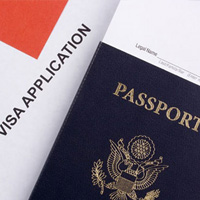Immigration Planning for Employers
For employers in the United States, if they don’t already have a need to employ foreign nationals, because of low unemployment in the United States and the unique skills offered by foreign nationals, it is inevitable that they soon will. In recent times, however, two factors have made it more difficult for United States employers to fill positions with foreign nationals. One has been the unavailability of H-1B visas because of the unrealistic and arbitrary annual cap of 65,000. The other has been the backlogs in several of the Employment Based Immigrant Visa (Green Card) categories. This article will go over several things United States employers can do to lessen the impact of these two limiting factors.
START EARLY
The days when United States employers could hire a foreign national with a temporary work visa and then wait several years to begin the Green Card process are behind us. United States employers who intend to employ a foreign national permanently should begin the process as soon as they identify a foreign national they wish to hire. There is no truth to the myth that a foreign national must already be working for the United States employer or that a certain amount of time must pass after the foreign national begins working on a temporary work authorization before the Green Card process should be started. By starting the process right away United States employers can reduce the impact of visa backlogs and negative changes in the immigration laws. In addition, by starting the process early United States employers will be able to keep H-1B workers employed indefinitely until the Green Card is finally available and obtain extensions in three year increments.
United States employers should also remember that the foreign employee does not have to be in the United States during the Green Card process, which includes Labor Certification (PERM), the residency petition, and the residency application or Consular process.
CONSIDER OPTIONS
United States employers should always consider options to the traditional employment based Green Card processes as a way of reducing the time it will take to get a prospective employee their Green Card or temporary work authorization. Options worth considering are Does the employee qualify under the EB-2 category? The EB-2 category is for permanent positions with United States employers that require at least a Master’s Degree or a Bachelor’s Degree and five years of experience in the field. The principal benefit of the EB-2 category is that Green Cards are immediately available for most countries and it is possible to go through the entire Green Card process, including Labor Certification (PERM), petition, and application, in about a year. Even for countries with backlogs, the EB-2 backlogs are much less than with the EB-3 category which is for positions that only require two or more years of training education or experience.
Is the employee outstanding or possessed of extraordinary ability? There are several categories for both the permanent and temporary employment of foreign nationals that give special consideration to persons who are outstanding or extraordinary in their field. The reason these are worth mentioning is because it is much easier to qualify as outstanding or extraordinary than one might think. To qualify, a foreign national does not have to be a Nobel Prize or Academy Award winner and only needs to satisfy a few of several possible criteria. Green Cards and temporary work visas for extraordinary or exceptional persons are currently available for all countries. In addition, in the Green Card category, persons of extraordinary ability are not required to go through Labor Certification (PERM). This means a person could qualify for a
Green Card in just a few months. In the temporary employment category, there is no annual cap on visas for outstanding individuals. Is there anything about the United States employer or the foreign national that makes them exempt from the annual H-1B cap? Employers should also explore if there is anything about the employer or the foreign national that makes them exempt from the annual cap on first time H-1B visas.
What the reader should take away from this article is the knowledge that there are still numerous opportunities for the permanent or temporary employment of foreign nationals. One should not accept the notion that with H-1B caps and Immigrant Visa backlogs there is no way to come to the United States on the basis of an offer of employment. United States employers should also continue to lobby the White House and Congress for changes to the immigration laws of the United States that are consistent with the needs of United States employers.































